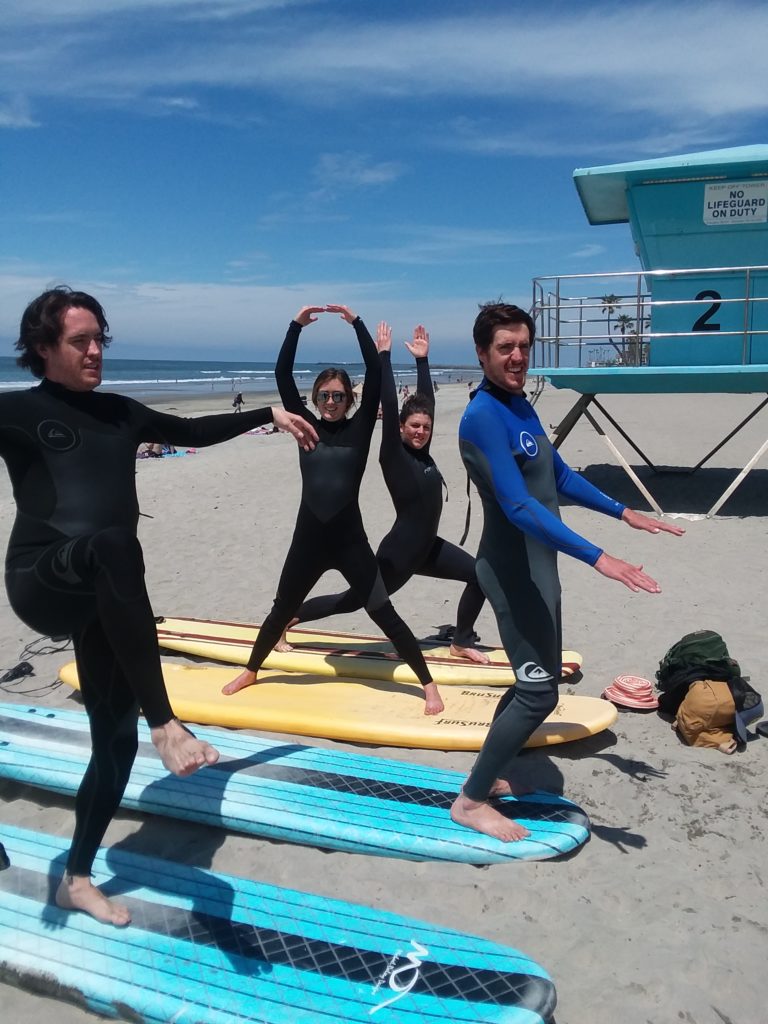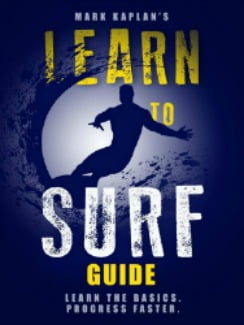What You Learn in a Series of Surf Lessons
There is a quicker learning curve in a series of surf lessons. Learning to surf is a slow process. Movies make it look easy, but all new students say this is more difficult than I thought it would be. The reason is that are many techniques sewn together from properly lying on the surf board to finally riding the surf board.

The First Fundamental
In Oceanside Surf Lessons, the first fundamental is often one of the more difficult pieces to master. Lying on the surf board correctly and paddling to catch a wave without getting turned over is difficult for many people. They don’t remember to place their feet at the back, they don’t paddle balanced on the board, they don’t paddle evenly with both arms, they stop paddling too soon. All these items are corrected during a lesson in the water.
Catching Waves
Catching waves requires timing. Surfboards are not boogie boards and many people like to jump on the board as the wave arrives and they get turned over. Paddling must begin before the wave arrives and then paddling has to be fast once the wave reaches the board until the surf board is in front of the wave. Once again, these particulars must be coached.
Popping Up
Standing up on the surfboard is different than other board sports. Surfing is the only board sport where you begin lying down. Getting up on the board in surf lessons to the perfect posture with feet in the right position and body facing square to the front is where most of the beginning work is spent. The process is very specific and most beginners like to finesse it in their own manner, which doesn’t work.
Paddling to the Outside
After these fundamentals are mastered, we begin paddling through waves to catch the next one coming in. This prepares students for paddling to the outside to catch bigger foam waves. It also prepares students to begin catching real waves.
Students have to learn timing and gain judgment on which waves to ride and when to turn around. This is a fun process that makes students feel like they are really surfing. Riding bigger foam waves is a jump because they have more power and travel faster.
Riding Real Waves
Learning to ride real waves in surf lessons is soon mixed in with catching foam waves. Beginners often learn to ride real waves by catching them at an angle so they don’t pearl as frequently. Once again timing and judgment have to be learned.
In the process of mastering the fundamentals, beginners might start moving to shorter boards. I begin teens and adults on 9′ soft tops, but we want to move to the 8′ soft top within a few lessons because they are more fun once all the fundamentals are mastered. They are also easier to handle and more maneuverable once the techniques are learned.
After the first surf lesson, most students would be able to practice on their own. The problem they have if they don’t surf often is they forget the fundamentals and begin adopting bad habits. Most of the intermediate surfers I teach have adopted bad habits and have to be retrained to ride waves.
The longer students are coached, the more the good habits become muscle memory and less likely they will learn bad habits as they advance. If students start popping up or riding incorrectly, they no longer can catch and ride waves.
Learn More
For Oceanside Surf Lessons, see the Home Page
See the Post Surf Lessons Begin with Foam Waves
See the Post What You Learn in a 2 Hour Lesson
See the Post How to Progress in Surfing
See My Dry Land and In Water Demo video
See How to Catch a Green/Real Wave video
My New Surfing Course in an E-Book or Paperback plus Demo Video
Get the 18 Chapter 7,500 word Course that can prepare you for a lesson or give you the fundamentals if you are going to try it on your own. 10 years of teaching 350 students a year has given me the insights on the most precise measures you must follow for success. This course is what I teach on the dry land and in water instruction. The Course includes a 15 minute video on my dry land and in water demonstration. Only $4.95
Buy the E-book for $4.95. Learn to Surf (Different cover but same book)
Buy the Paperback on Amazon $7.95
